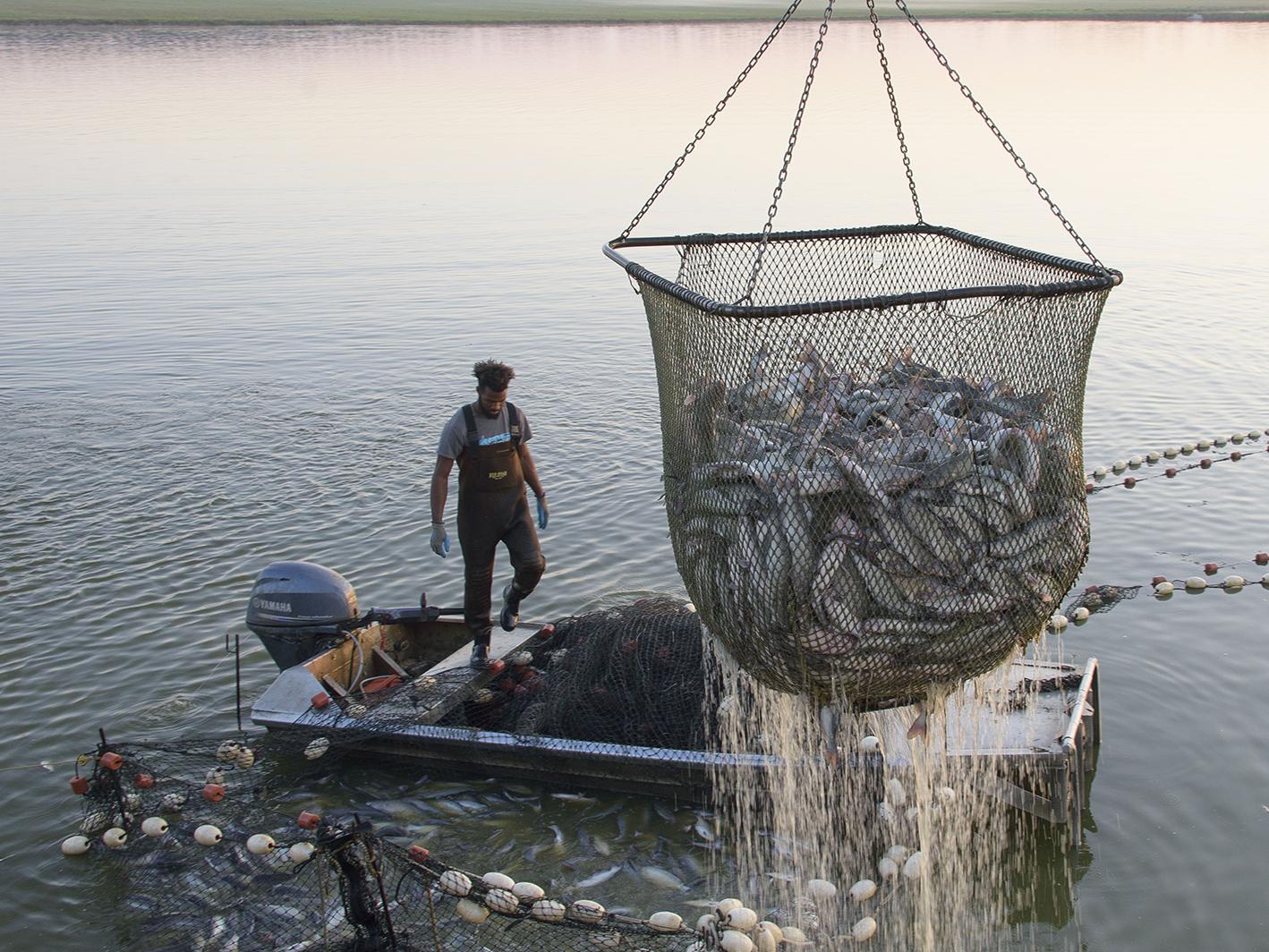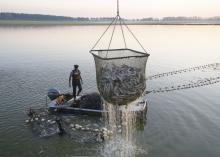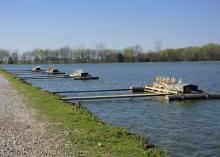Information Possibly Outdated
The information presented on this page was originally released on August 7, 2017. It may not be outdated, but please search our site for more current information. If you plan to quote or reference this information in a publication, please check with the Extension specialist or author before proceeding.
MSU research, outreach boosts catfish industry
STONEVILLE, Miss. -- This year marks Mississippi’s 200th anniversary as a state, but one of its most successful industries -- catfish farming -- is only about 60 years old.
The Mississippi State University Extension Service has played a significant role in the state’s status as the top producer of catfish in the U.S. Most of the technological advances related to the industry have taken place at MSU facilities under the direction of university and U.S. Department of Agriculture researchers.
“The state’s industry has sustained its No. 1 national ranking by including scientific principles in decision making processes,” said MSU Extension aquaculture associate Mark Peterman. “This research has been instrumental in the sustainability of the catfish industry over time by providing an unbiased and scientific approach to problem identification, methodology and communication of results.”
Today, the state boasts more than 150 catfish production operations over 34,700 surface water acres. Farm-gate sales regularly exceed the $200 million mark each year. Virtually all of the state’s catfish production is in the alluvial soils in the Mississippi Delta or the Black Belt soils of east Mississippi.
The early days
Thomas Wellborn, former Extension leader in what is now the MSU Department of Wildlife, Fisheries and Aquaculture, stated in a 1990 report that the first commercial catfish enterprise in the state began in 1959. Skinner Anderson and Bobby Thompson of Yazoo City stocked channel catfish fingerlings into the 400-acre pond they had built in 1957.
During the early 1960s, the industry consisted of mostly small operations that sold processed fish to local markets or live fish used to stock private ponds. Construction of a processing plant in Morgan City in 1967 allowed production to move to year-round sales.
A year later, MSU officials William Bost and James Anderson committed funding toward research and educational programs to benefit the catfish industry. At that time, Bost was the MSU Extension director and Anderson was the Mississippi Agricultural and Forestry Experiment Station director.
“In the 1970s, marginal catfish farms began to fail as they struggled with achieving economies of scale and the turbulent agricultural economy of the period,” said Jimmy Avery, Extension aquaculture professor. “However, the opening of a feed mill in 1974 and the development of support industries eventually led many remaining farmers to expand their operations. Both acreage and yield increased from 1982 until 2002.”
Advances in research
The MSU Delta Research and Extension Center in Stoneville has been the central hub for much of the technological advances in the last half-century. These include improvements in production practices, feed formulations and fish health management.
“The introduction of hybrid catfish, which are a cross between female channel catfish and male blue catfish, has also been a major development,” Peterman said. “Hybrids have growth and disease resistance traits that are superior to normal channel catfish.”
Research to improve production practices has centered on the use of hybrid catfish and intensive systems such as split ponds and intensively aerated small ponds.
“Split pond systems confine catfish to a small portion of the pond and use the remaining pond to improve water quality,” Avery added. “Another new technique producers employ is increasing aeration rates per acre on smaller ponds.”
Feed accounts for 65 percent of the cost of producing catfish. MSU catfish nutritionists have spent over 30 years finding ways to reduce the cost of feed through lowering protein levels or using alternative ingredients. This research carries over to disease prevention.
“Every study that has been done on new antibiotics for catfish has been done in Mississippi, along with a large portion of the research associated with fish health management,” Avery said.
“If you look at some of the more recent advancements, the development of oral vaccines and treatments for some of our most challenging fish diseases have been done here.”
Ebbs and flows
U.S. catfish industry highs and lows can be attributed to increases in production and feed costs, along with foreign competition.
“The industry was at its height in the 1980s and early 1990s, when production costs were at their lowest and there was little to no competition from foreign imports,” Peterman said. “Increased feed and fuel costs, and later, competition from foreign imports, led to catfish industry economic loss in the U.S. and in Mississippi.”
The fluctuation of demand also adds to the risk of being a catfish producer.
“The biggest challenge financially is that you don’t have control over the price of your inputs or the sales price of your product. As corn and soybean prices go up, catfish feed costs rise accordingly,” Avery said. “Since we don’t have a way of booking fish for forward sale similar to what farmers can do with cotton and grain futures, catfish farmers have to take what someone is willing to pay on the day they harvest fish.”
Feed prices reached an all-time high of $590 per ton in 2012, leading producers to repurpose acreage that had been used as catfish ponds. The state saw a decrease in acreage from 130,500 acres in 2001 to 36,100 in 2016. Producers are beginning to recommit to catfish acreage as feed prices stabilize below $350 per ton.
Another sign that the industry is rebounding is a recent change in regulatory oversight that levels the playing field for the domestic catfish market. The USDA Food Safety and Inspection Service now oversees inspection.
“This is the same agency that oversees inspection of both domestic and imported poultry and beef,” Avery said. “This means domestic and imported catfish are being inspected at the same level, which was previously not the case.”
Mississippi is well positioned to continue setting the standard for catfish production, Avery said, primarily because of the strong infrastructure in place.
“We build the equipment, make the feed and process the product all within the state,” he said. “We also have a solid state and federal commitment for continued funding for research and Extension and are fortunate to have strong commodity associations in place. It doesn’t hurt that we produce a great product, and we’re in the middle of the six-state radius that consumes the most catfish.”
EDITOR’S NOTE: Throughout Mississippi’s bicentennial year, the Mississippi State University Extension Service is spotlighting historic events or stories from the state’s 200-year history.





